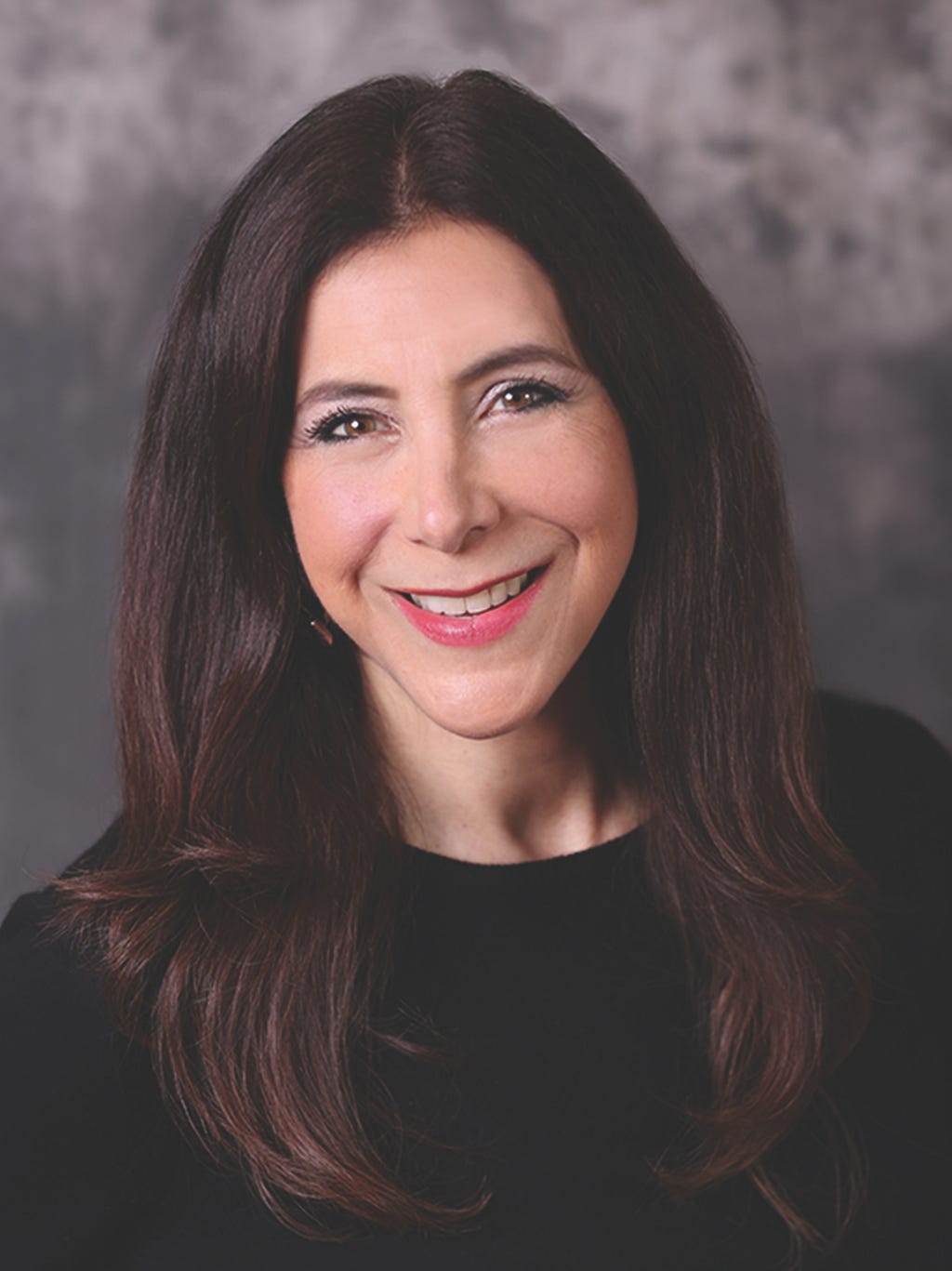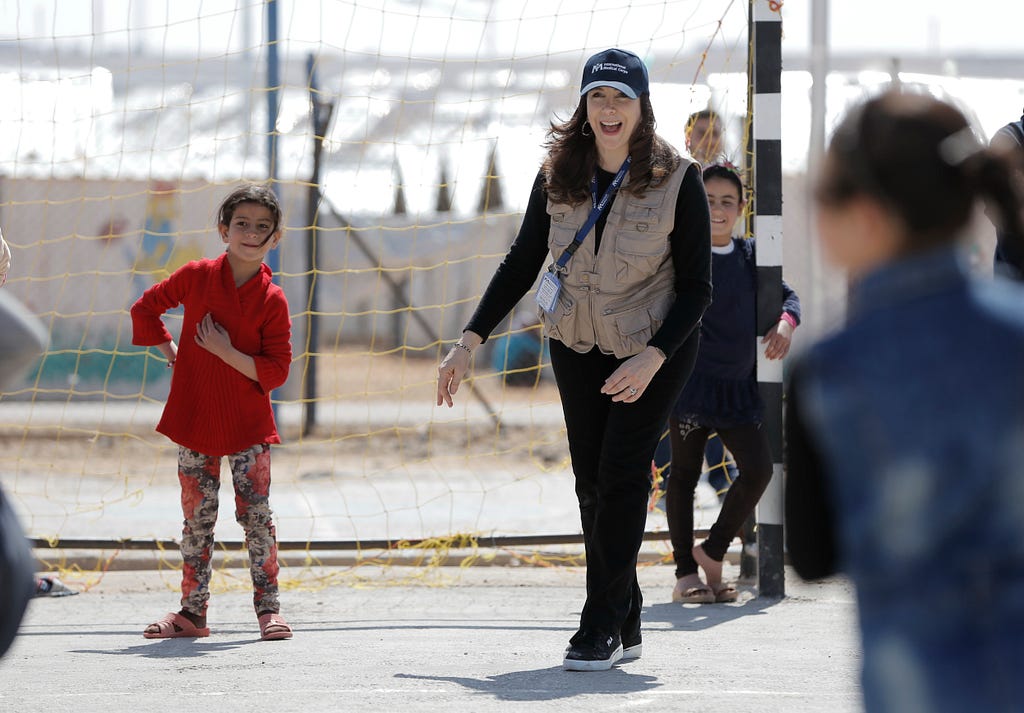Nancy Aossey of International Medical Corps: 5 Things You Need To Know To Successfully Lead A Nonprofit Organization

Leadership is having a vision — a mission — of change you are inspired to see, choosing the right people to help you realize that vision, trusting them to carry out their work and constantly re-evaluating yourselves. I have found that the key to success for International Medical Corps — our “special sauce” — is our people who take a fierce can-do approach to the many obstacles we face. We embrace tough challenges, often with considerable amounts of risk. We’re adaptable, collaborative, and courageous. We also know that the solutions we seek lie in the communities we’re trying to help. That’s why we strengthen existing systems and build local capacity to create a network of first responders everywhere we work.
As part of my series about “individuals and organizations making an important social impact”, I had the pleasure of interviewing Nancy Aossey.
Since 1986 Nancy Aossey has served as the President & CEO of the global first responder, International Medical Corps, she has overseen its expansion to include the delivery of more than $3.2 billion of humanitarian assistance, health services and training to tens of millions of people in 80 countries. Ms. Aossey helped launch International Medical Corps’ early programs in Angola, Somalia and Rwanda. She also has served as Chairman of the Board of InterAction, America’s largest coalition of international relief and development organizations, and is a member of the Council on Foreign Relations.
Thank you so much for doing this with us. Before we begin, our readers would like to get to know you a bit more. Can you tell us a bit about your “backstory”?
I was born and raised in Cedar Rapids, Iowa. My father was a milkman, and my mother a homemaker and secretary. At an early age, my parents instilled in me and my siblings the importance of hard work and helping others. We were always volunteering and involved in charitable activities in our community — from cleanup projects in the local parks, to charity collection drives. After graduating from the University of Northern Iowa, my first job with AT&T took me to California.
Can you tell us the story behind why you decided to start or join your nonprofit?
When I first moved to California, I was looking for a meaningful way to volunteer. Soon after that, I was introduced to Dr. Robert Simon, an emergency room doctor, and founder of International Medical Corps, who had been traveling back and forth into Afghanistan to provide medical relief and training to people suffering under the Soviet occupation. I asked how I could help and learned that the organization was looking for someone to lead its efforts. After I was hired, I applied for my first passport and began traveling regularly to the Afghanistan/Pakistan border. We went on to expand our programs providing medical relief and training to countries across Africa, as well as South and Central America, Asia, and the Middle East. Over the next 35-plus years, I scaled the organization from a handful of employees to more than 8,000 today. Since our founding, we have responded in 80 countries to every major humanitarian crisis, from the genocide in Rwanda, to ethnic cleansing in the Balkans, the Indian Ocean Tsunami, the Haiti earthquake, the Ebola crises in Africa, wars in Syria and Ukraine, and the COVID-19 pandemic.
Can you describe how you or your organization aims to make a significant social impact?
International Medical Corps’ mission is two-fold: bring healthcare to the most vulnerable people in the hardest-to-reach areas, and focus on training communities, helping people recover and build the skills and knowledge needed to become their own best first-responders. Our approach of providing emergency relief and long-term training is especially critical for communities that experience repeated crises (war zones like Yemen and Somalia), or that suffer frequent natural disasters (such as Indonesia and the Philippines). Importantly, more than 95% of International Medical Corps’ staff are local to the communities where they serve. That local knowledge and cultural awareness is key to successful, sustainable recovery efforts.
Last year alone, International Medical Corps:
Directly benefited 18 million people worldwide
Conducted 6 million medical consultations
Helped more than 3.8 million people with water, sanitation, and hygiene needs
Offered protection and support to 1,579,510 people facing gender-based violence
Provided almost 1.5 million people with critical nutrition support
Provided mental health and psychosocial services to 930,687 people
Vaccinated 255,417 children against measles
Ensured that more than 98,000 births were assisted by a trained birth attendant
Trained 77,625 people on health-related issues

Without saying any names, can you share a story about an individual who was helped by your idea so far?
There are so many. For instance, I think of our brave staff of over 30 Ukrainians in Mariupol, who were forced to flee when the Russian invasion began last February. Many of them had to hunker down with their families and neighbors in the basements of their buildings for weeks. You can imagine what an extremely dangerous and terrifying time this was for them. Eventually, they made it out and traveled to safety. Most of them wanted to continue helping their own communities so, despite the personal risks, they have returned to work. They remain determined to help others. I find their courage so inspiring — and typical of many of our heroic local staff working in really tough environments all around the world.
Are there three things the community/society/politicians can do to help you address the root of the problem you are trying to solve?
First, as a nonprofit working in conflict and disaster zones, we depend entirely on the financial generosity of individuals, as well as governments, foundations, and corporations, to continue our lifesaving work. Second, beyond funds, often the only real solution to humanitarian crises — particularly crises caused by conflict and war — are solutions that address the systemic causes of those crises, and those must be pursued by local, national, and regional governments and organizations. Finally, action and advocacy taken by a public educated about the realities for people in crisis zones can make a real difference in bringing about change at this scale.
How do you define “Leadership”? Can you explain what you mean or give an example?
Leadership is having a vision — a mission — of change you are inspired to see, choosing the right people to help you realize that vision, trusting them to carry out their work and constantly re-evaluating yourselves. I have found that the key to success for International Medical Corps — our “special sauce” — is our people who take a fierce can-do approach to the many obstacles we face. We embrace tough challenges, often with considerable amounts of risk. We’re adaptable, collaborative, and courageous. We also know that the solutions we seek lie in the communities we’re trying to help. That’s why we strengthen existing systems and build local capacity to create a network of first responders everywhere we work.
Based on your experience, what are the “5 things a person should know before they decide to start a nonprofit”? Please share a story or example for each.
In addition to having a clear mission and vision, you’ll want to explore whether the need you wish to fulfill is already being met by another organization. So often, nonprofits are created with a mission very similar to other organizations, and hence are duplicative, drawing limited resources away from groups already doing the work. Second, there are extensive administrative requirements that you have to take into consideration; setting up and running a non-profit is challenging, and you need multiple skill sets beyond the beneficiary programs you are operating, including Accounting, Finance, Information Technology, etc. Third, you need community buy-in and needs-driven activities. The people most affected best understand the challenges and most often have the solutions, and it’s important to listen to those people whom you’re planning to serve. Fourth, have a fundraising plan. A worthy cause doesn’t guarantee that people will automatically donate to your organization. It is a process, and people give to those they trust. Finally, document your impact. It’s important to share with your supporters the positive impact that their support is having.
This was very meaningful, thank you so much. We wish you only continued success in your mission.
Nancy Aossey of International Medical Corps: 5 Things You Need To Know To Successfully Lead A… was originally published in Authority Magazine on Medium, where people are continuing the conversation by highlighting and responding to this story.
